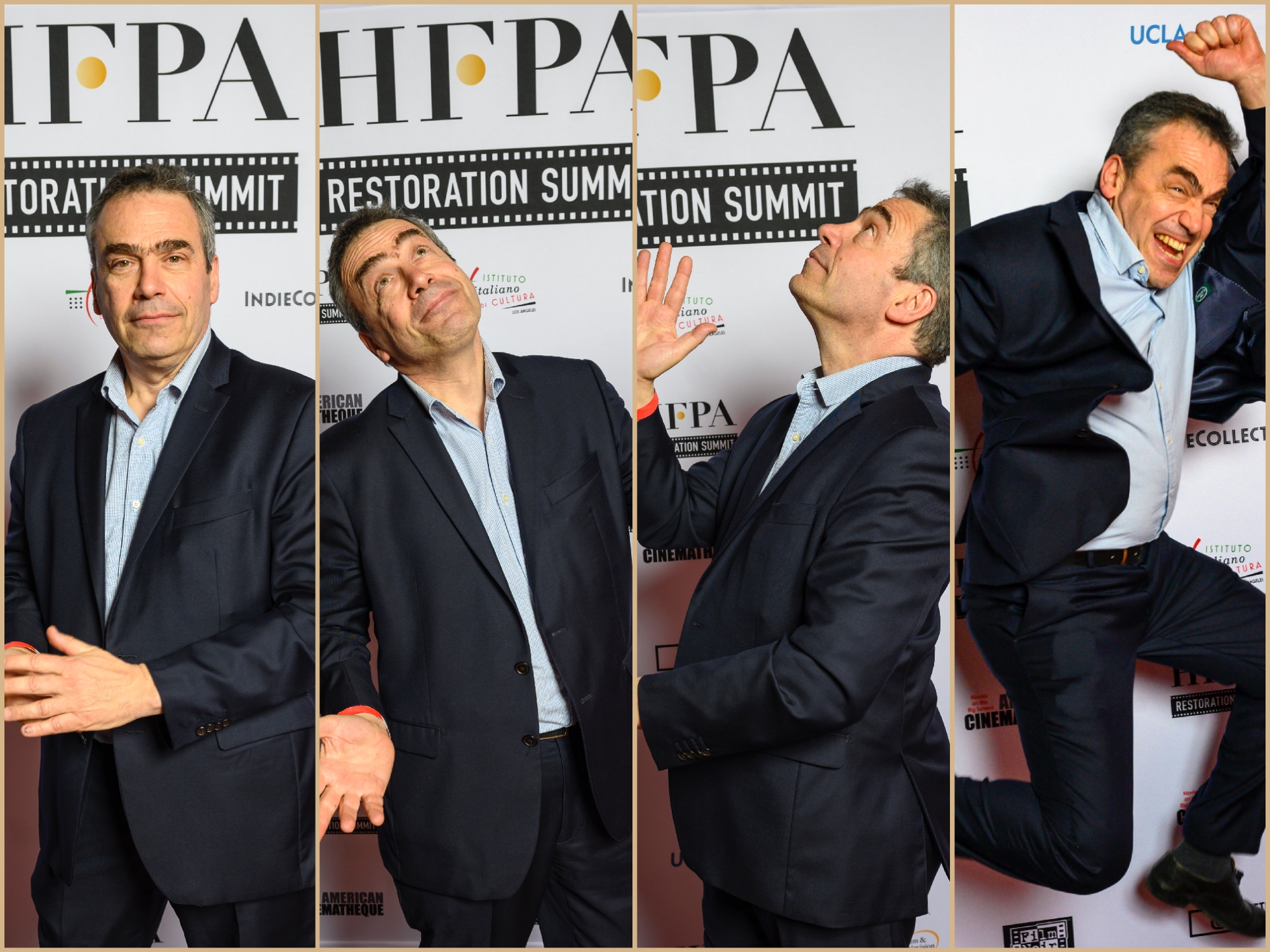
- Film
Serge Bromberg’s Magical Mystery Tour of Silent Film
An entertaining, surprising and instructive voyage through the silent era of film was one of the highlights of the two days of celebration of classic and restored that took place on February 15th at the Egyptian Theatre in Los Angeles. The first event of the second annual HFPA Restoration Summit was titled Film preservationist and founder of Lobster Films, Serge Bromberg presented his “Retour de Flamme” clip show, during which he accompanied early films on the piano while presenting his latest discoveries. With a lively journey through once-lost film archives from around the world, his tour through the silent era ventured through the hilarious works of Charlie Chaplin and Buster Keaton, and the world of the famous Lumière brothers. But the magical moment came with his exploration of the fantastical cinema of the magician-turned-filmmaker Georges Méliès. Featuring clips and his own live musical accompaniment, Bromberg guided us on a journey of rediscovery of Méliès’ lost films. In a moment of despair, the French master famously piled all his negatives and set fire to them in his back yard. More than 500 films were lost that dark day never to be seen again. But Bromberg told how Méliès had also shot many of those films with a second camera tied to the first. The resulting negs had been shipped to New York where the director’s brother Gaston had established the Star Film Company to distribute his films to protect their copyright. Bromberg’s narrative here becomes worthy of a movie plot, detailing how many of the long lost reels have recently come to light and are now the object of a global effort to save and restore them, returning to view for the first time in a century, seminal works and the early history of cinema.
The Summit audience was thoroughly taken by the magic of the images re-emerging from oblivion that Bromberg screened as well as by the “pantomimic art”, as Charlie Chaplin used to refer to it (Chaplin’s 1915 The Bank was screened as well as behind the scenes footage detailing its complex restoration). It was as if time had stopped in the darkened Egyptian, and expressions of admiration and emotion filled the room. It was an unforgettable experience.
mso-ascii-theme-font:minor-latin;mso-fareast-font-family:"Times New Roman";
mso-hansi-theme-font:minor-latin;mso-ansi-language:EN-US’> joie de vivre"Cambria",serif;mso-ascii-theme-font:minor-latin;mso-hansi-theme-font:minor-latin’>A Trip to the Moon but, since the late 1980s, has produced and hosted hundreds of hours of French television. He’s made a César winning documentary, The mso-ascii-theme-font:minor-latin;mso-hansi-theme-font:minor-latin’>A Trip to the Moon. For fifteen years, he ran the festival of animation in Annecy. Given the range of his activities, we asked him how he describes what he does. “I’m a “cinevore,” he answered. “I have a passion for cinema and for human adventures. Cinema is just an excuse for being together and sharing our passion.”